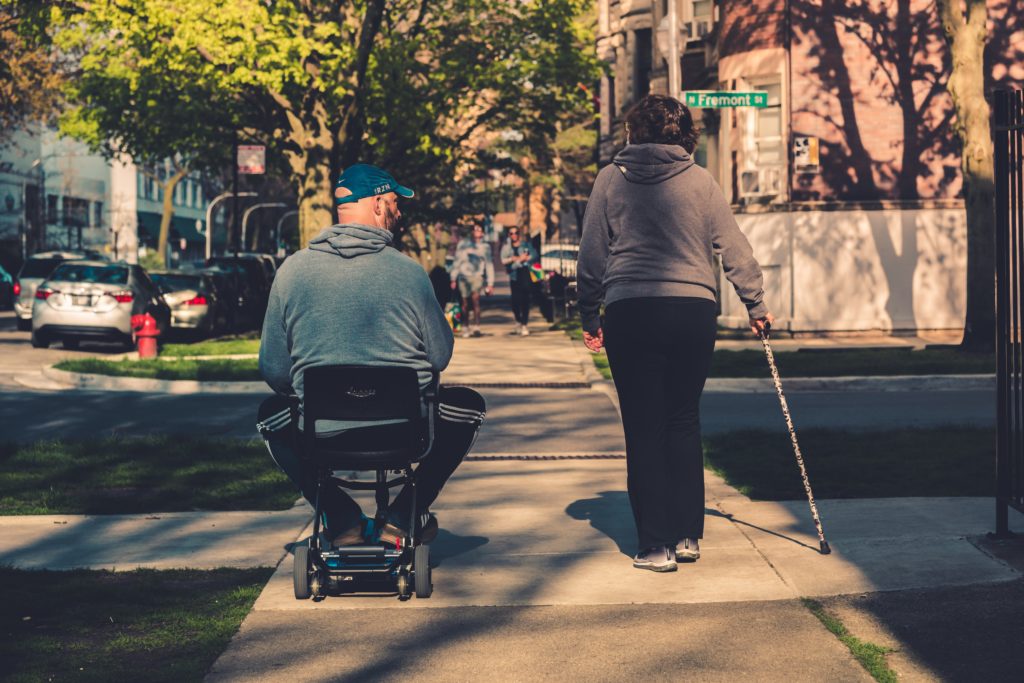A life with a disability can be lonely
According to the WHO, over one billion people, that is about 15% of the world population, live with some form of disability. By the year of 2050, this tremendous number is expected to double. Living with one or multiple disabilities can affect a person’s life in many aspects. One fact is that people with disabilities tend to experience lower levels of health, social participation, and quality of life than the general population.
Despite the continued calls for social justice, living with disabilities is still highly stigmatized. In mainstream society, “health” remains the “norm”, while disability is always seen as a deviation from this “normality”. As a result, having a disability makes an individual more likely to feel isolated and disconnected from the society. According to the charity Sense, half of people with disabilities reported feeling lonely, and one in four of experienced loneliness on a daily basis. Research has also shown that loneliness was significantly associated with lower levels of well-being among people with disabilities.
The emerging idea of peers
People always try to understand why living with a disability can create so many disadvantages to an individual. In the mid-1980s, Mike Oliver, a British sociologist and a person with disabilities himself, brought up an idea that people are disabled by the society. The society itself is designed to be exclusive to those with impairments. For example, someone with paraplegia is disabled because there is no ramp but only stairs to enter a building.
Oliver’s ideology has certainly resonated with many people with disabilities around the world. It also inspired people to build a collective, united identity with disabilities and to call for broader social changes together. The call for broader social change led many governments to start improving public services, infrastructure accessibility, and legislation for people with disabilities. This was also the time when the idea of connecting with others who also live with disabilities (i.e., peers) emerged.
What can peers bring to someone with disabilities?
Many individuals with disabilities have a need for peer support; however, this need is largely unmet. A national survey found that about 50% of Canadians with traumatic or non-traumatic spinal cord injuries reported that their need for peer support was somehow unmet. Consequently, this unmet need can lead to lower participation in daily and social activities and reduced quality of life. Research therefore started to examine how individuals with disabilities can benefit from their peers. Generally, we can categorize these benefits into three domains: practical, emotional, and identity-changing.
1) Practical
The practical benefits of peer support is connecting with somebody who has been living with a disability for a longer period of time than the person seeking support. Such connections are entitled “peer mentorship”. In this type of relationship, peer mentors can offer practical support through their experience of coping with disabilities. For instance, they can offer tips and tricks on how to manage health complications to those who will likely encounter these same issues. Peer mentors can also help mentees find public services and aid as they sought out those services for themselves initially.
2) Emotional
Connecting with peers can also help people adapt to their disabilities emotionally. Such connections can bring comfort, normalization, and many other positive feelings to those with disabilities. Some trained peer mentors can also provide emotional counselling and empathic understanding, which has been shown to be the biggest reason for many people to build relationships with peers.
3) Identity-changing
Another key outcome of peer support is inspiration. A person who has more experience of leading a life with disabilities can become an inspiration for someone else. Specifically, their verbal encouragements can enhance one’s motivation of developing a new identity with a disability. In addition, some people regard the ones who have successfully overcome the challenges of living with disabilities as their role models.
Is there any concern?
There appears to be numerous benefits of peer support. However, it is also important to recognize the negative aspects of peer mentorship. First, some mentors may suffer from a huge time and energy burden in those dyadic relationships. More seriously, some relationships have become an emotional tool for mentors because they are the ones who usually offer much but receive little as a return.
Second, we need to place more emphasis on increasing the “quality” of the relationship. In other words, pairing two individuals up does not guarantee that it will be beneficial to both sides. People need to focus on establishing a satisfactory, positive match between the individuals. Finally, we must recognize that not everyone wants to receive peer support. Some people with disabilities prefer to interact with those who are non-disabled. For those people, interacting with those who live with disabilities can, sometimes, immerse them in a negative emotional states.
What can I do, as a person with a disability?
- Trying to normalize the feeling of loneliness might be the first step. It is very common and normal to experience loneliness, not only for those with disabilities, but also for those who are non-disabled.
- Expressing your needs with someone who is going through or has gone through a similar life situation can be helpful. Taking this action does not mean a person is incapable or dependent. Rather, it represents that this person is stepping towards a greater level of independence – “interdependence.”
- The Covid pandemic may hinder us to connect with others. We can take advantage of the Internet in order to stay connected and supportive.
- Sharing your stories with your peers or just being an active listener are approaches to start the relationship. While we help others, we also end up helping ourselves a lot more too.





